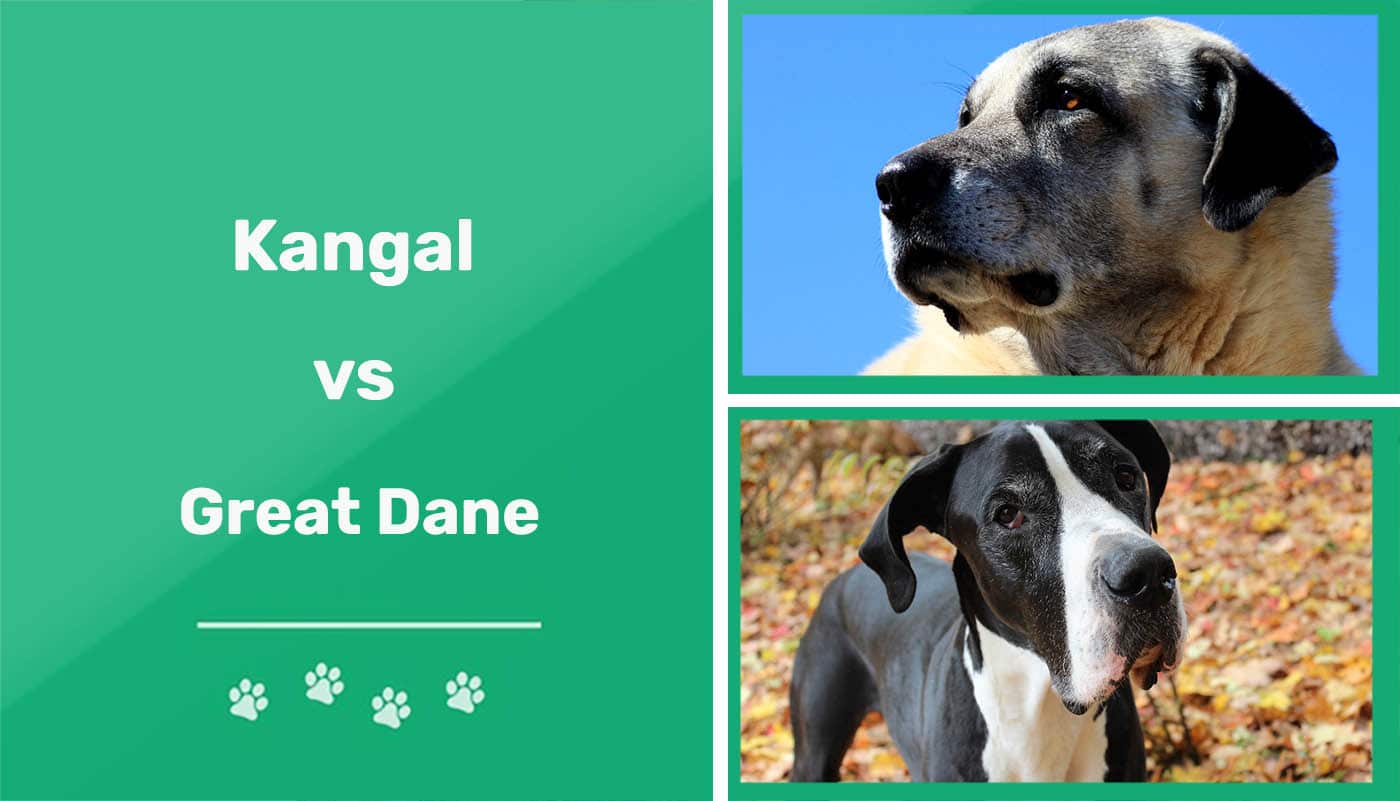
Both Kangal and Great Dane dogs are large breeds, so they usually get lumped together into the same category. However, they are two entirely different types of dogs that deserve credibility for their unique attributes rather than just being “big dogs”. Sure, they have a lot of similarities, but they also have some differences that are worth noting.
Here is all you should know about the Kangal versus the Great Dane and which you should choose as a pet or farmhand:

Visual Differences
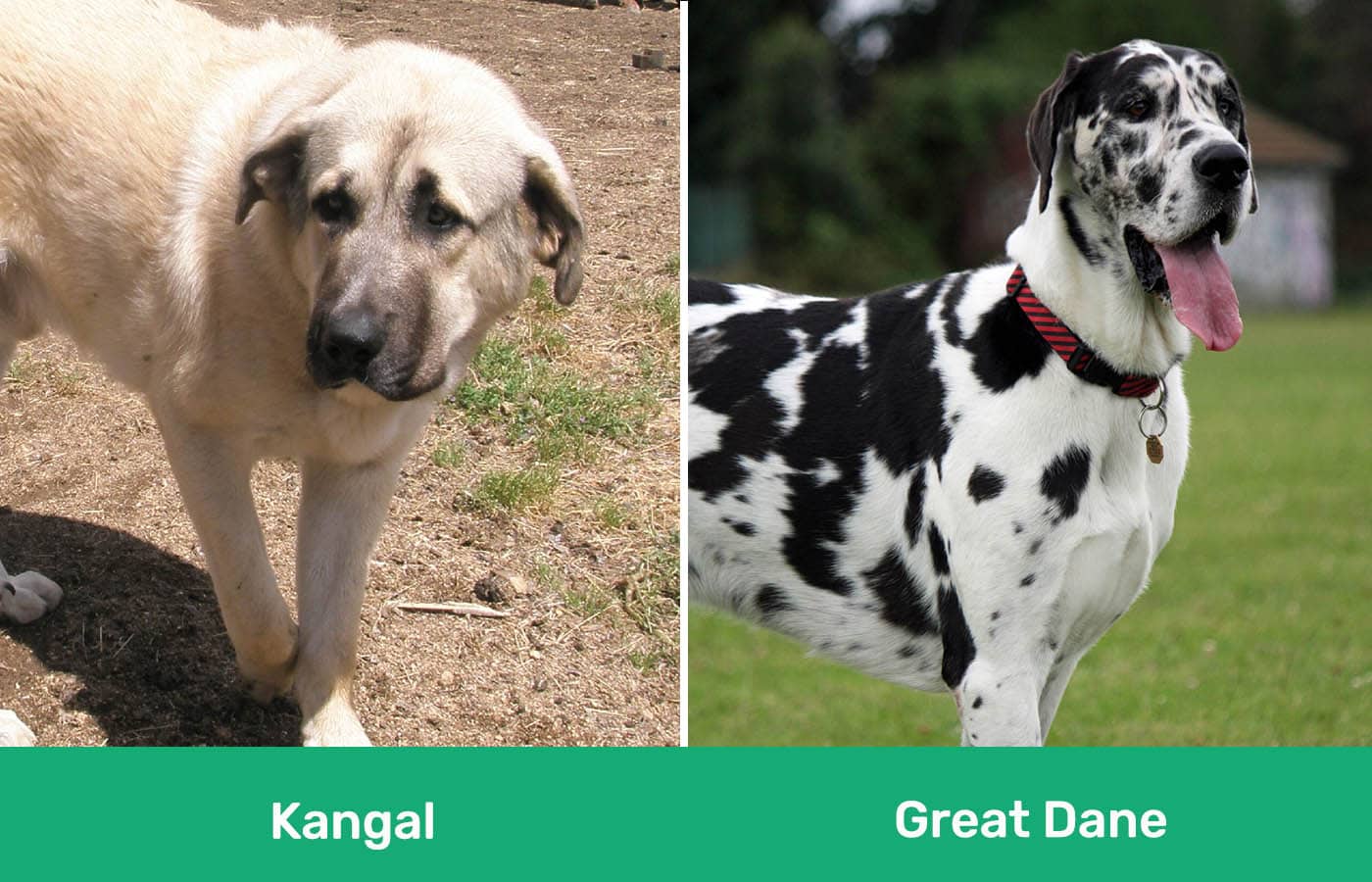
First and foremost, the Great Dane tends to stand taller than the average Kangal dog breed. They also happen to be less bulky and lankier. Kangal dogs and Great Danes have short coats, but the Kangals’ coats are usually thicker and denser. Therefore, Kangal dogs tend to need more grooming in terms of brushing and bathing than Great Danes do.
At a Glance
The Kangal
- Average height (adult): 25–31 inches
- Average weight (adult): 90–130 pounds
- Lifespan: 12–15 years
- Exercise: 1+ hours a day
- Grooming needs: Moderate
- Family-friendly: Yes
- Other pet-friendly: Often
- Trainability: Intelligent, Independent, Loyal, Protective
The Great Dane
- Average height (adult): 28–35 inches
- Average weight (adult): 99–200 pounds
- Lifespan: 8–10 years
- Exercise: 2+ hours a day
- Grooming needs: Easy
- Family-friendly: Yes
- Other pet-friendly: Often
- Trainability: Friendly, Sociable, Loyal, Eager to Please

Kangal Overview
This is a large dog breed with a powerful body suited for guarding livestock against predators, as that’s what they were originally bred for. Kangals come from a remote location in Turkey, where they were revered for their guardianship skills. This breed stayed well confined from other types of dogs in the country due to their remoteness, so they have been kept from crossbreeding and have been able to maintain their tight lineage, which ensures an easy-to-spot overall physical appearance.
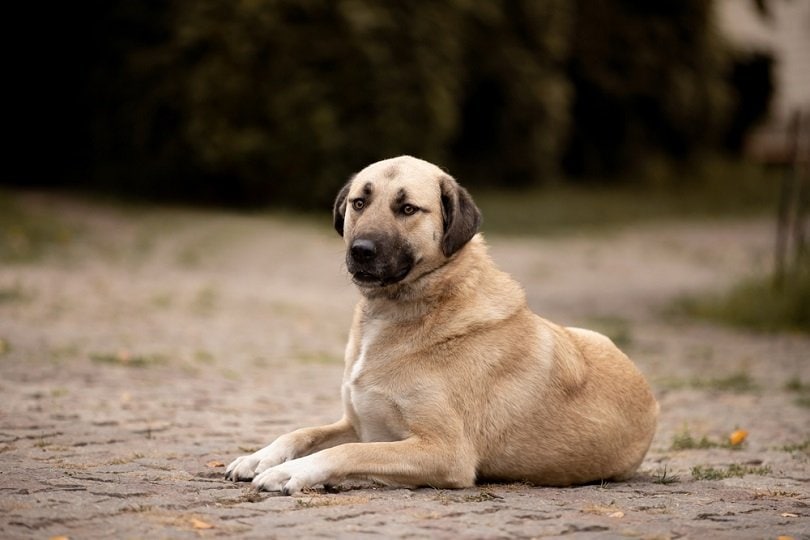
Personality / Character
Kangals may have been bred to protect livestock, but they make for good family dogs too. This is a loyal breed that loves its family members and gets along well with children. Kangals love to hang out with family members and enjoy spending lots of time outside in nature. They prefer to live in houses with fenced yards so they can be “free” most of the time, and they need discipline and structure to maintain a happy and comfortable quality of life.
Training
Kangals rely on obedience training to understand their place and their expected behavior as time goes on. Luckily, these are smart dogs, so they take to training well. Obedience training should begin when they are still puppies, about at 8 weeks old. These dogs can also do well with guarding and protection training, given their reason for being bred and their lineage.

Grooming
While the Kangal’s coat is short, it is thick so regular brushing is required. We recommended brushing at least twice a week to keep the coat from getting matted and to release any dander, loose hairs, or debris that is lingering. Baths are only required when this breed gets dirty, but because these dogs enjoy the outdoors so much, dirtiness comes with the territory of ownership. Therefore, be prepared to bathe your Kangal at least once a month.
Health Conditions
While this Kangal is generally a healthy breed, there are some conditions they’re susceptible to that any potential owner should be aware of. Only when potential conditions are known can they be caught and treated early for a better chance at a happy and healthy life.
Here are the main conditions to learn about:
Suitable For:
Kangal dogs are most suitable for farm and ranch owners who need a livestock guardian and family companion. These dogs love the great outdoors and would prefer to have a job to do rather than just hanging out all day long. Active families and singles are best suited as owners for this interesting dog breed.
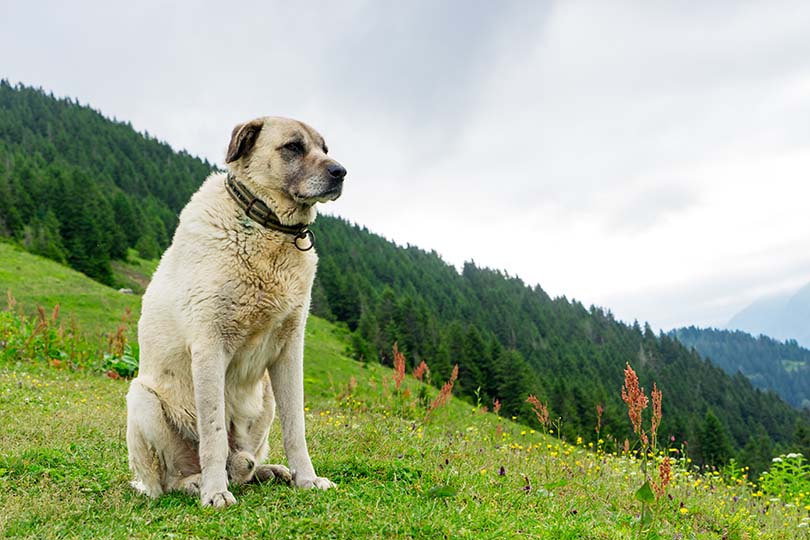

Great Dane Overview
The Great Dane is a mighty dog that is stout and lean yet agile and gentle. While considered an extra-large dog breed, these pooches are extremely family oriented and loyal. They are originally from Germany, where they evolved to be family pets. These dogs can be big droolers, and they’re prone to getting lazy if left to their own devices.
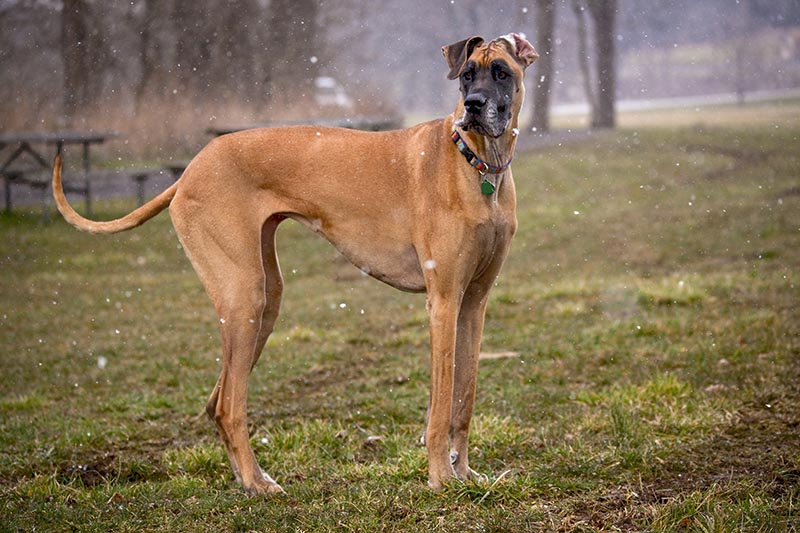
Personality / Character
Great Danes are big snuggle bugs. These dogs love to cuddle up while you watch television or work on your computer. However, they are all for heading outside and spending some time walking and exploring the world!
These eager-to-please dogs are outgoing yet protective when it comes to their human and animal companions at home. They take up lots of space, and they require lots of exercise each day to stay healthy and happy. Owners should expect to provide at least two hours of daily exercise to meet their Great Dane’s needs.
Training
Great Danes are smart like Kangals are, so they take well to training. However, they can get bored easily so training should be exciting and positive for the best results. Like with Kangals and every other dog breed, Great Danes should start obedience training early while still puppies. This breed’s eagerness to please usually correlates to a quick training process. Agility and hunting training are other endeavors that this breed would excel at.
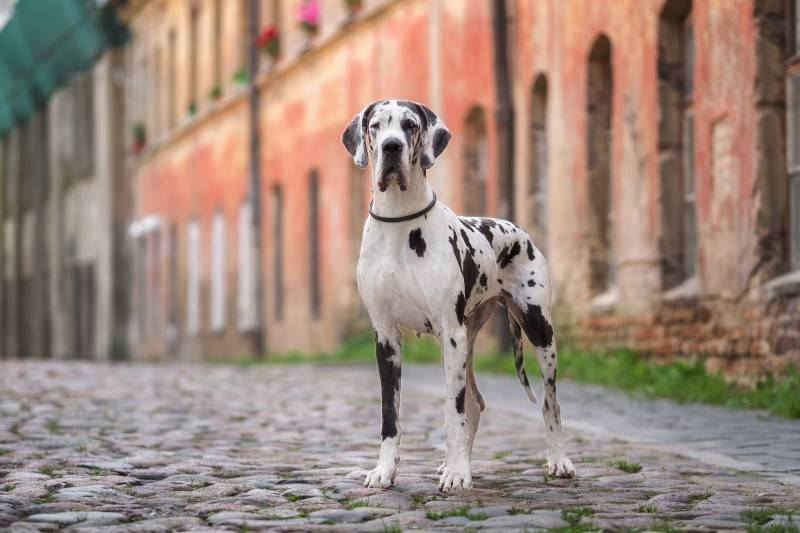
Grooming
When it comes to grooming, the Great Dane is generally easy to take care of. Their coat of fur is short and requires only occasional combing or brushing. They are great at self-care, so bathing usually isn’t required. Even if they get dirty while on an adventure, an hour outside before coming in should result in a dog that’s ready to spend time inside without causing a horrible mess. They require lots of exercise so their nails should stay naturally trimmed as time goes on.
Health Conditions
Like Kangals, Great Danes are usually healthy dogs throughout their lives. There are a handful of conditions to be aware of that could creep up at any time, even if the chance of such conditions developing is small.
Here’s what potential owners should know about:
Suitable for:
This breed is suitable for almost any lifestyle. While they require lots of walking time or other types of exercise daily, they are generally gentle, loyal, and protective dogs that can get along with people of all ages, toddlers, or seniors alik
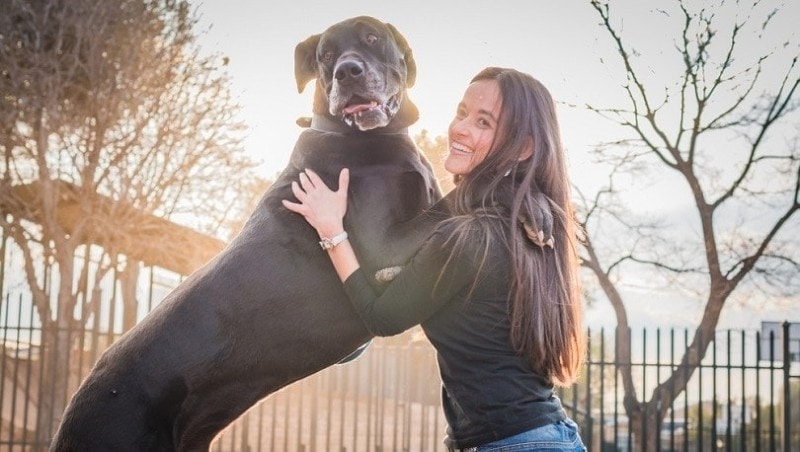
e. It is important to make sure that they get out for long walks each day, even slow walks that are accommodated by people in wheelchairs. Otherwise, these dogs are known for being laid back indoors without causing any trouble.

Which Breed Is Right for You?
Nobody, including the professionals, can tell you which breed of dog is the best suited to your household and lifestyle but you. Sure, professionals and veterinarians can offer recommendations, but the ultimate decision comes down to your personal preferences and expectations. Be honest with yourself about what you can handle and what you can offer to figure out the best route to take.
